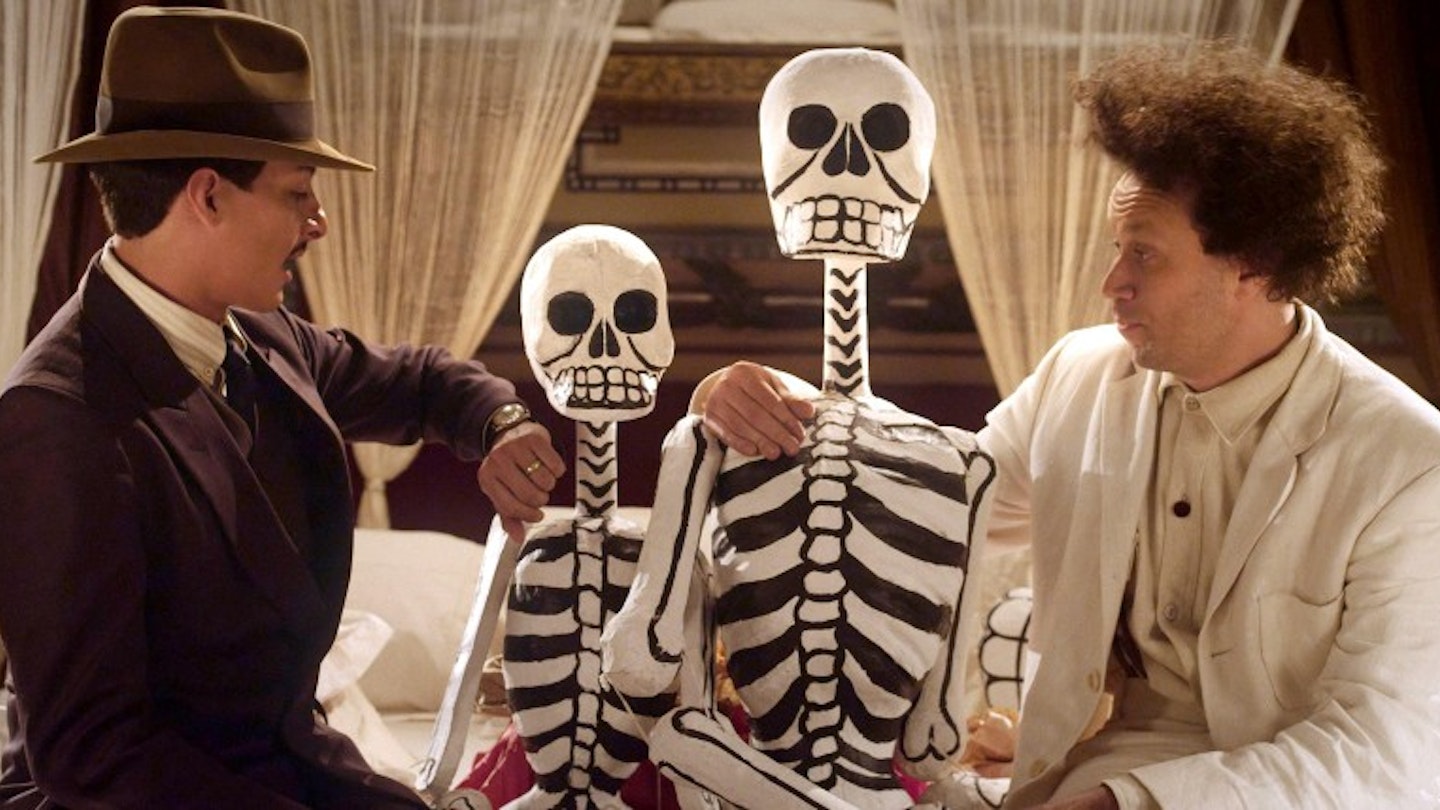When Sergei Eisenstein checked into a luxurious hotel in Guanajuato in 1931, his career was at a crossroads. Facing accusations of formalism back in the USSR and daunted by the complexity of matching sound with the montage editing technique that had made Strike! (1924), Battleship Potemkin (1925) and October (1928) such cinematic sensations, Eisenstein had accepted an offer to make a picture for Paramount in Hollywood. However, the project had fallen through and, rather than return to Stalin's Moscow a failure, he had agreed to make a non-political film in Mexico for the left-leaning author Upton Sinclair. But, 250 miles of footage later, Eisenstein was no closer to realising his vision.
As Eisenstein's lifelong admirer, Peter Greenaway speculates upon the 10 days that shook his world with an aesthetic audacity and impish bawdiness that will delight devotees as much as the scene of the 33 year-old losing his virginity to a bisexual Mexican has tasked the Kremlin. Photographed with elegant vigour by Reinier van Brummelen, this seduction stands out alongside the visit to the Museum of Death and the sinuous discussion of finance in the columned dining room. But, even when the dialogue is at its most declamatory, Greenaway's innovative use of split screens, archival cutaways, indiscriminate monochrome and sly CGI effects commands attention.
Conveying arrogance and insecurity, Finnish actor Elmer Back excels as the innocent abroad whose intellectual curiosity and childlike wonder render him so unworldly. But, for all the broad comedy, this is also an admiring study of an artist who transformed his medium and Greenaway draws on Eisenstein's writings to highlight how the potential of the moving image has been wasted since talkies stole their poetic purity.
